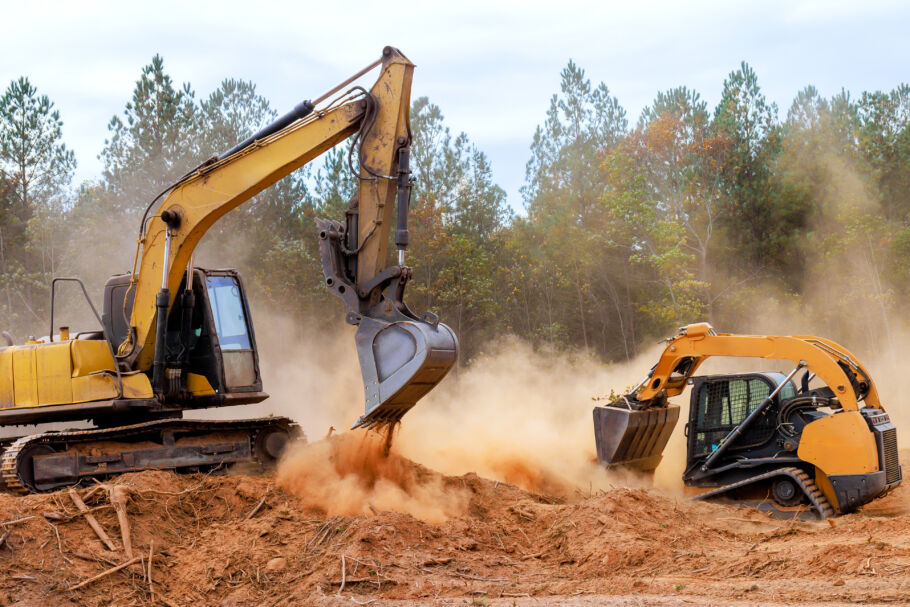
Date published: 28 February 2023
Tribunal provides further guidance on valuation of rent under the Electronic Communications Code
Tribunal provides further guidance on valuation of rent under the Electronic Communications Code
A recent decision of the Lands Tribunal for Scotland in an application under the Electronic Communications Code – EE Ltd v Service – has provided some further guidance on the valuation of consideration (i.e. rent) payable by operators to site providers under Code agreements. It is the first decision of the Scottish Tribunal in a case concerning a rural mast site in which the Tribunal have used the three-staged approach to valuing consideration, which has become standard in Code cases concerning valuation.
The three-staged approach
Paragraph 24 of the Code sets out how the Tribunal must determine the consideration to be payable by an operator to a site provider under a Code agreement. It includes certain assumptions on which the value of the consideration must be assessed, the most significant of which is the “no-network” assumption, i.e. an assumption that the right to which the transaction relates does not relate to the provision or use of an electronic communications network.
There are now a number of Tribunal decisions, north and south of the border, which provide guidance on how to approach the valuation of consideration under paragraph 24. It has become standard to use a three-staged approach. That approach is based on the staged approach adopted by the County Court in Vodafone Ltd v Hanover Capital Ltd, which was a claim for renewal of a tenancy under the Landlord and Tenant Act 1954. It was adopted for the first time in an application under the Code in Cornerstone Telecommunications Infrastructure Ltd v London & Quadrant Housing Trust, and has been used in a number of subsequent cases. Service is the latest.
The three stages are as follows:
- Stage 1 is to assess the alternative use value of the site (i.e. the rental value of its current use or of the most valuable non-network use).
- Stage 2 is to assess the value of any additional benefits over and above the right of occupation which will be conferred upon the operator by the rights conferred which it would otherwise have to provide for itself and which warrant additional payment.
- Stage 3 is to assess whether there will be any greater adverse effect on the site provider than the existing or alternative use which requires to be reflected.
The values assessed at the three stages are then added together to comprise the consideration.
Levels of consideration
As well as providing guidance on how to approach valuation of consideration, the Tribunals, in several cases, have provided guidance on the levels of consideration that parties can expect to be determined in other cases. In two Upper Tribunal cases – EE Ltd & Hutchison 3G UK Ltd v Affinity Water Ltd and On Tower UK Ltd v AP Wireless II (UK) Ltd (otherwise known as Audley House) – the Tribunal collated in a table the levels of consideration that had been determined in previous cases. In Affinity Water, the Tribunal stated:
“Without taking account of any special features or particular sensitivities which a particular location may exhibit, we would be surprised if the value of Code rights fell significantly outside the ranges indicated by previous decisions concerning sites with similar characteristics.”
Later in the decision, the Tribunal stated:
“We would suggest that the pattern, or tone, is now becoming clear enough that it should rarely be necessary when presenting evidence to the Tribunal in future for parties to adopt the much more detailed Hanover Capital approach to valuation.”
In Audley House, the Tribunal stated:
“Absent special features (such as a valuable alternative use), it is unlikely that the Tribunal will assess consideration at a level that is not consistent with the range of values seen in the table… Valuation evidence, if it is needed at all in future references, ought to become a great deal simpler in light of the guidance that the Tribunal has now given.”
In a subsequent Upper Tribunal case – EE Ltd & Hutchison 3G UK Ltd v Stephenson & AP Wireless II (UK) Limited (otherwise known as Pendown Farm) – the Tribunal stated:
“There is nothing particularly unusual about this example of a rural mast site. Looked at in the round, there is no reason to depart from the figure which the Tribunal identified in [Audley House] as the letting value, on the paragraph 24 assumptions, of an unexceptional rural site remote from any housing. I therefore determine that the rent under the new lease will be £750 a year.”
The valuation in Service
In Service, the site provider argued that there were alternative uses for the land that justified a higher valuation than EE’s valuation. However, the Tribunal rejected that argument. They stated:
“The [site provider] appears to believe that the mere existence of potential, however speculative, must translate into a higher value than for the existing, or uncontested, use. We respectfully disagree. In this case we have not been provided with detailed evidence to enable a proper assessment of the likelihood of planning permission [for an alternative use] being granted, nor have we received any evidence of demand other than from the [site provider] himself.”
The Tribunal were “not satisfied that there is any realistic prospect of a use for this land other than its present use”. On the basis of the present use (which, taking into account the “no-network” assumption, was agricultural use), their valuation at stage 1 was a nominal £100 a year.
At stage 2, the Tribunal noted that in Dale Park – an Upper Tribunal decision concerning a rural mast site – the valuation at stage 2 was £600 a year. However, the Tribunal’s impression was that “the rights in [Service] are likely to be of less practical significance and therefore of less value to the [operator] than those in Dale Park.” Having regard to certain differences between the two cases, the Tribunal took the view that £600 a year would be too high for the site in Service, and their valuation at stage 2 was £400 a year instead.
At stage 3, which relates to adverse effects on the site provider, the Tribunal took into account evidence they had heard regarding (a) liability to maintain the access track – described in evidence as “a long and winding road, through several gates and with livestock in the fields” – and (b) the inconvenience to the site provider of having to assist operator’s contractors “who lose their way or get into difficulty of one kind or another when attempting to access the site”.
In relation to (a), the Tribunal arrived at a value of £150 a year. In relation to (b), the Tribunal arrived at a value of £300 a year, producing a total value of £450 a year at stage 3.
Adding all three stages together, the Tribunal determined the consideration at £950 a year. In determining that figure, the Tribunal cross-checked it against the consideration determined in three previous cases concerning rural mast sites – Cornerstone Telecommunications Infrastructure Ltd v Fothringham (otherwise known as Gelly Wood, a Scottish case which was decided before the three-stage approach became standard), Dale Park and Pendown Farm. The Tribunal noted that £950 a year was £350 more than Gelly Wood (£600 a year), £250 less than Dale Park (£1,200 a year), and £200 more than Pendown Farm (£750 a year). They considered that the stage 3 factors relating to the access track in Service justified a higher consideration than in Gelly Wood and Pendown Farm, and that Dale Park had stage 3 factors which justified the higher consideration in that case (“the site was close to housing and both the location of the site itself and the effect of work being carried out on the site were going to be intrusive”).
It is clear from the decision in this case that in Scotland as well as in England and Wales (and in the words of the Upper Tribunal in Audley House) “it is unlikely that the Tribunal will assess consideration at a level that is not consistent with the range of values seen in [previous cases]”, unless there is a special feature such as a valuable alternative use.
Where a site provider wishes to argue that there is an alternative use justifying a higher valuation, the Tribunal will expect there to be detailed evidence of the likelihood of planning permission for the alternative use, as well as evidence of demand for the use. Such evidence was lacking in Service, resulting in a level of consideration that was consistent with previous Tribunal decisions.
Daniel Bain acted for EE in the case discussed in this article.
To find out more about the issues discussed in this article, contact Daniel Bain.
To find out more contact us here
Expertise: Dispute Resolution















